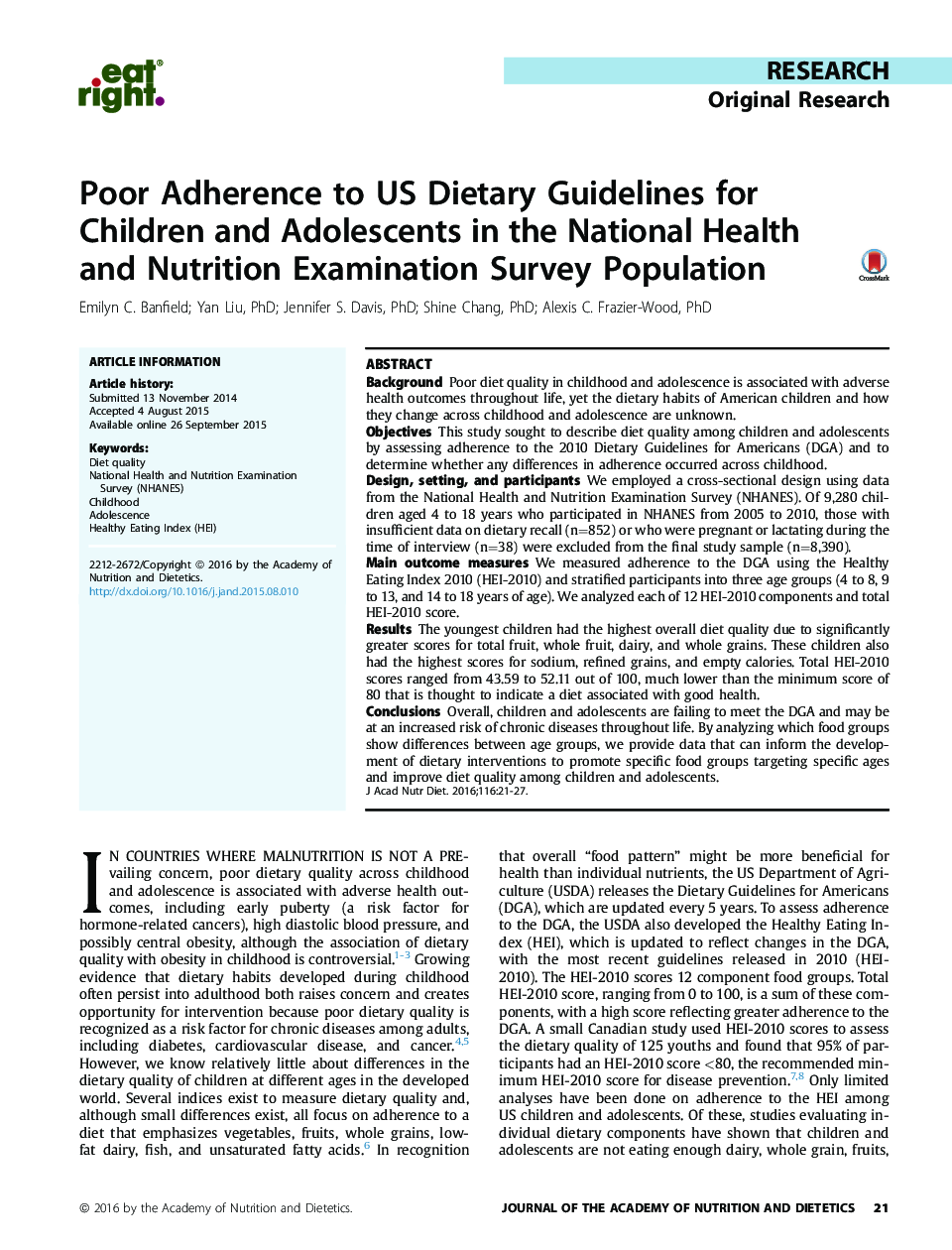| کد مقاله | کد نشریه | سال انتشار | مقاله انگلیسی | نسخه تمام متن |
|---|---|---|---|---|
| 2656472 | 1645501 | 2016 | 7 صفحه PDF | دانلود رایگان |
BackgroundPoor diet quality in childhood and adolescence is associated with adverse health outcomes throughout life, yet the dietary habits of American children and how they change across childhood and adolescence are unknown.ObjectivesThis study sought to describe diet quality among children and adolescents by assessing adherence to the 2010 Dietary Guidelines for Americans (DGA) and to determine whether any differences in adherence occurred across childhood.Design, setting, and participantsWe employed a cross-sectional design using data from the National Health and Nutrition Examination Survey (NHANES). Of 9,280 children aged 4 to 18 years who participated in NHANES from 2005 to 2010, those with insufficient data on dietary recall (n=852) or who were pregnant or lactating during the time of interview (n=38) were excluded from the final study sample (n=8,390).Main outcome measuresWe measured adherence to the DGA using the Healthy Eating Index 2010 (HEI-2010) and stratified participants into three age groups (4 to 8, 9 to 13, and 14 to 18 years of age). We analyzed each of 12 HEI-2010 components and total HEI-2010 score.ResultsThe youngest children had the highest overall diet quality due to significantly greater scores for total fruit, whole fruit, dairy, and whole grains. These children also had the highest scores for sodium, refined grains, and empty calories. Total HEI-2010 scores ranged from 43.59 to 52.11 out of 100, much lower than the minimum score of 80 that is thought to indicate a diet associated with good health.ConclusionsOverall, children and adolescents are failing to meet the DGA and may be at an increased risk of chronic diseases throughout life. By analyzing which food groups show differences between age groups, we provide data that can inform the development of dietary interventions to promote specific food groups targeting specific ages and improve diet quality among children and adolescents.
Journal: Journal of the Academy of Nutrition and Dietetics - Volume 116, Issue 1, January 2016, Pages 21–27
